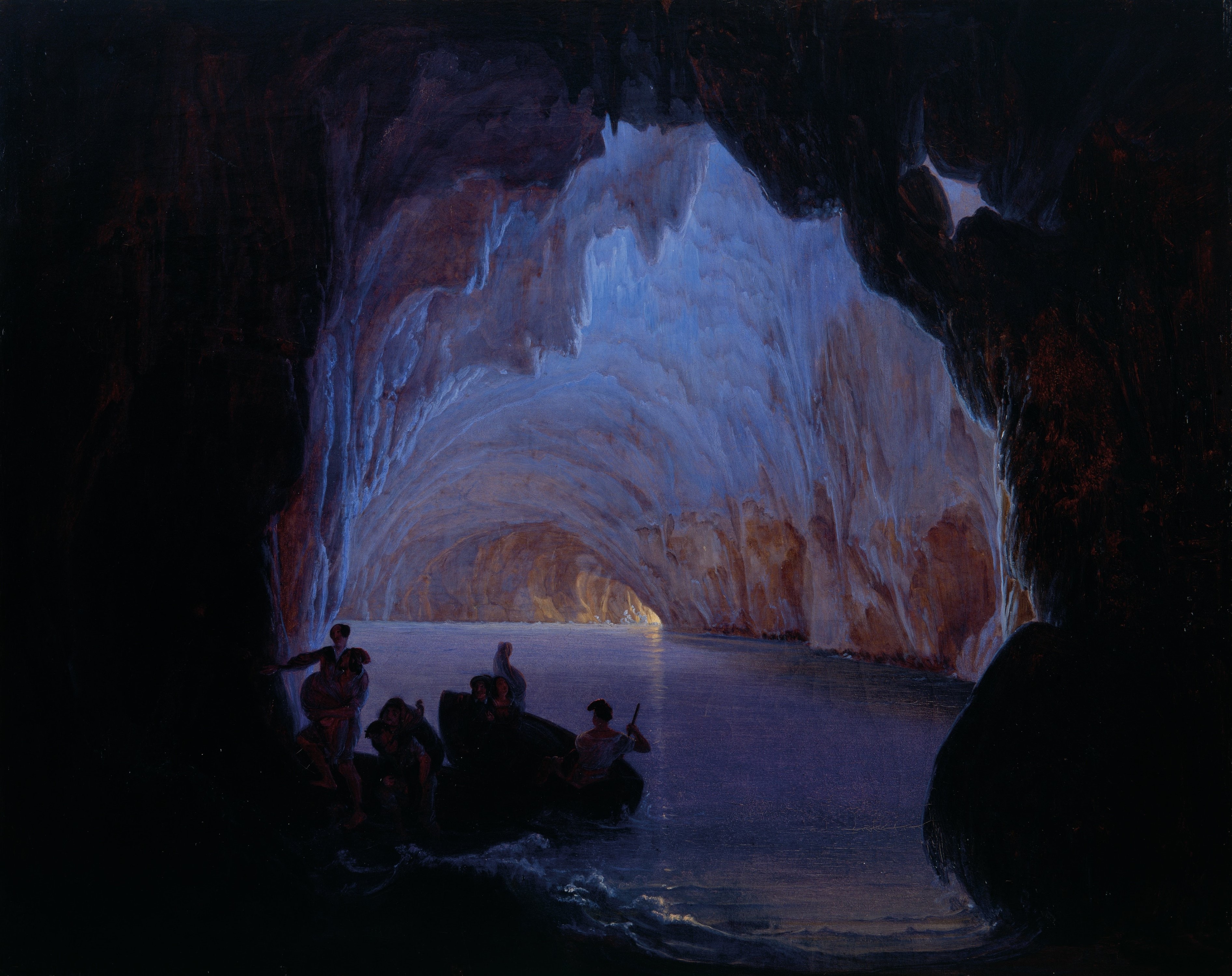The Blue Grotto of Capri is probably the best-known work of the late Romantic painter Heinrich Jakob Fried. The cave had been rediscovered in 1826 by the painters August Kopisch and Ernst Fries, and soon advanced to become one of the most popular destinations of German travelers in Italy. Fried visited this spectacular natural wonder on April 30, 1835, during the second year of his three-year sojourn in Italy. His painting presents the fascinating view the visitor has of the cave at its small, round entrance, being shown here to a small group of travelers. Fried has captured in subtly rendered nuances the mysterious play of light in the grotto, in which the sunlight penetrates below sea level, reflecting blue on the walls of the rocky grotto. Even before the grotto had been discovered, blue was regarded as the symbolic color of Romantic desire, which goes back to Novalis’s novel titled Heinrich von Ofterdingen (1802), in which the protagonist is searching for the “Blue Flower,” the key to poetry.
en

